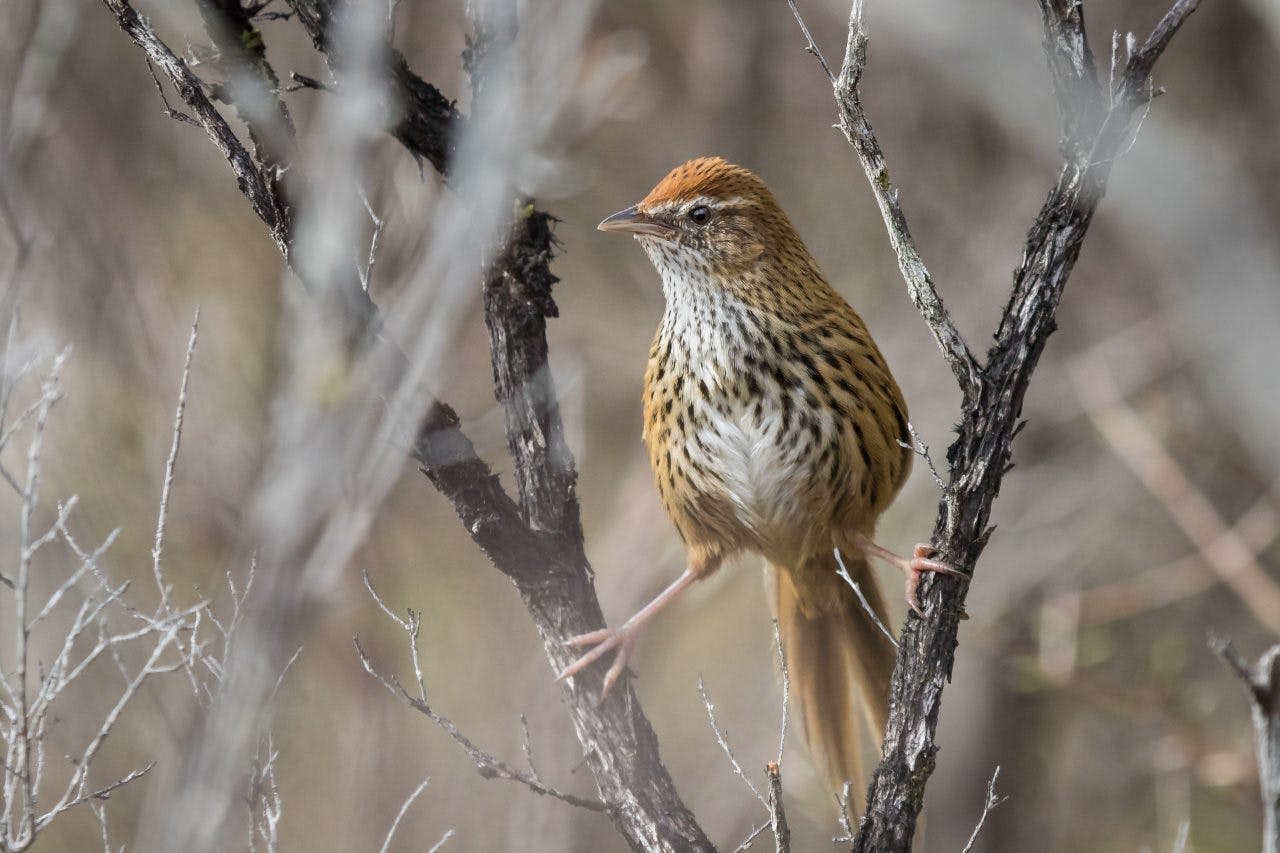This songbird is difficult to find – unless you know where to look.
The sparrow-sized fernbird (mātātā) is more often heard than seen. It prefers thick vegetation, reeds and grasses, earning itself the nickname ‘mouse bird’.
Fernbirds are widely, though patchily, distributed in dense wetland vegetation throughout New Zealand, but are absent from the southern North Island (apart from Waikanae Estuary) and Canterbury. Other habitats include pakihi vegetation and reedbeds growing in salt marshes on the West Coast, dry shrub land near North Cape and tussock-covered frost flats up to 1000m in Tongariro and Kahurangi national parks.
They are a long-tailed songbird, streaked predominantly brown above and pale below. The breast is also spotted dark brown. Most birds have a natural ‘part’ running down the centre of the chest.
The most conspicuous and recognisable feature is the loosely-barbed brown tail feathers which have a decidedly ragged appearance.
Both sexes, adults and juveniles, look alike and when mature weigh around 35g and reach around 18cm in length.
Fernbirds breed, nest and raise their young during late spring and summer. The nest is a deep, woven, feather-lined cup of fine grass or sedge leaves, usually less than one metre above ground or water and will typically contain three to five eggs. Both parents incubate the eggs, which takes around 14 days, and care for the young. Chicks fledge after 16 days and up to three clutches can be raised in a season.
The fernbird’s diet is chock full of protein. Caterpillars, flies, beetles, moths, spiders and other small invertebrates make up their menu. There has been one record of a fernbird eating a skink. Only occasionally do they eat seeds and fruit.
They frequently forage among leaf litter, holding leaves with one foot while inspecting the underside for prey.








